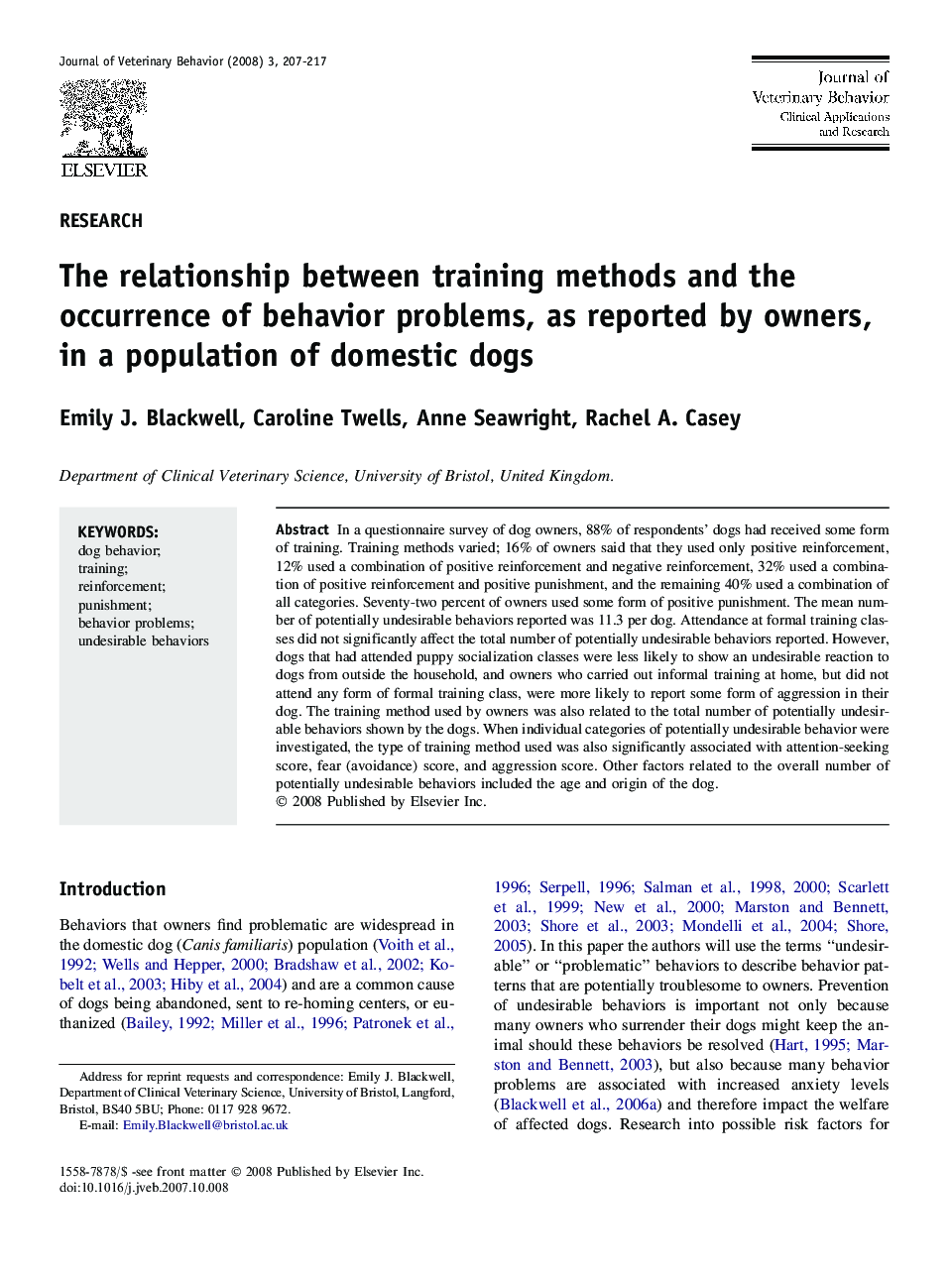| Article ID | Journal | Published Year | Pages | File Type |
|---|---|---|---|---|
| 2399705 | Journal of Veterinary Behavior: Clinical Applications and Research | 2008 | 11 Pages |
In a questionnaire survey of dog owners, 88% of respondents’ dogs had received some form of training. Training methods varied; 16% of owners said that they used only positive reinforcement, 12% used a combination of positive reinforcement and negative reinforcement, 32% used a combination of positive reinforcement and positive punishment, and the remaining 40% used a combination of all categories. Seventy-two percent of owners used some form of positive punishment. The mean number of potentially undesirable behaviors reported was 11.3 per dog. Attendance at formal training classes did not significantly affect the total number of potentially undesirable behaviors reported. However, dogs that had attended puppy socialization classes were less likely to show an undesirable reaction to dogs from outside the household, and owners who carried out informal training at home, but did not attend any form of formal training class, were more likely to report some form of aggression in their dog. The training method used by owners was also related to the total number of potentially undesirable behaviors shown by the dogs. When individual categories of potentially undesirable behavior were investigated, the type of training method used was also significantly associated with attention-seeking score, fear (avoidance) score, and aggression score. Other factors related to the overall number of potentially undesirable behaviors included the age and origin of the dog.
